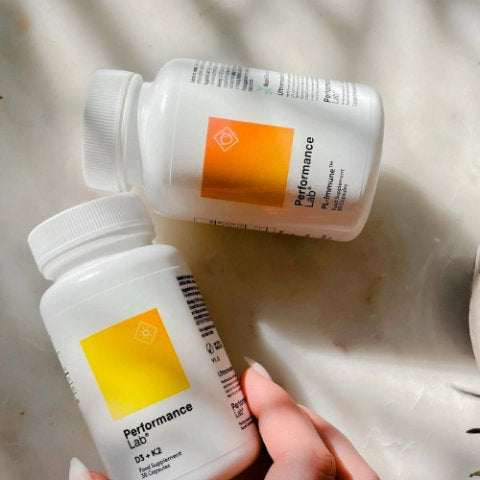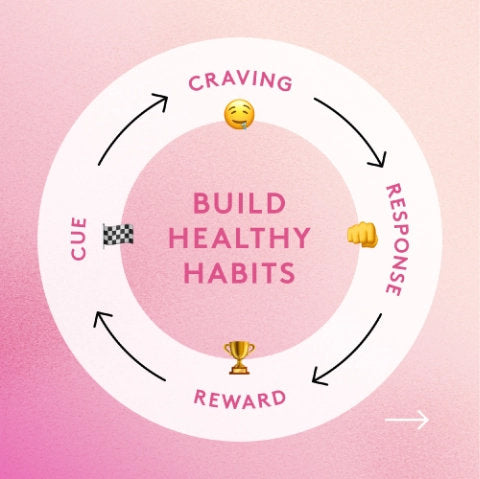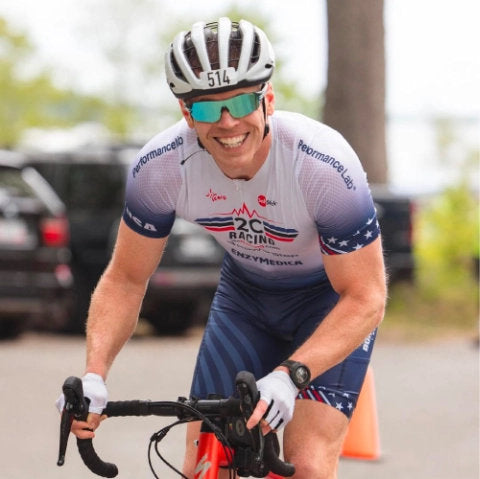Understanding Fatigue: how to optimize your training results with the right recovery strategy
Athletes are the most driven, motivated and focused individuals on earth.
Powering through tiredness. Enduring high training loads. And achieving superhuman levels of performance.
These traits separate the good from the average; the great from the good.
But the same traits can also lead to fatigue, poor recovery and a nosedive in performance.
That’s why the very best athletes know when to push hard. But also know when to ease off.
In this guide you’ll learn everything you need to know about fighting fatigue and optimizing recovery.
Put your feet up for five minutes and read on…
Key points:
- There are several ways to measure fatigue. Including biomarkers, non-invasive neural testing and psychometric assessments
- The fitness-fatigue model outlines the relationship between fitness adaptations, performance outcomes and fatigue
- Fatigue decreases within minutes of high-intensity, short-duration exercise. But can take days to recover from in the presence of muscle damaging-repetitive exercise
- There are no miracle cures for recovery. But there are lifestyle and diet interventions that speed up the process
Factors that affect fatigue
As a regular gym-goer you’ll know the feeling of fatigue all too well. The aches, the pains, the stiffness. The loss of motivation and drive. These are all telltale signs of exhaustion.
The definition of fatigue is pretty straightforward. It’s the decreased ability to perform at a given workload.
In reality though, it’s a complex phenomenon involving central and peripheral factors.
Central fatigue v peripheral fatigue
Central fatigue refers to the reduction in force-generating capacity and voluntary action that occurs within the brain.
It’s controlled by afferent feedback and results in downregulation of neurons that make them less responsive. In other words, messages sent by the central nervous system don’t reach the muscle.
Peripheral fatigue occurs when messages from the central nervous system manage to jump across neuronal pathways – and therefore reach the peripheral nervous system.
But factors inside the muscle lead to loss of force production. These could include glycogen depletion, reduction in calcium release, build-up of metabolites etc.
You can find out more about central and peripheral fatigue in our guide to managing exercise fatigue.

Identifying and managing fatigue
The type, intensity and duration of exercise will determine the degree of central and peripheral fatigue. But the bottom line is - a challenging workout leads to fatigue.
Now here’s the important part...
Fatigue doesn’t just disappear the moment you finish the workout. It lingers around in the background. And the more difficult or lengthy your workout, the longer that fatigue stays around.
Which can have a big impact on the next session.
Assessing fatigue in athletes
With so many variables (including an athlete's own perceptions) it can be difficult to determine the fatigue without proper testing. Fatigue assessment tools help scientists and practitioners understand more about central and peripheral mechanisms and pathology that causes it.
Here are just a few ways that fatigue can be measured inside and outside of a lab:
Transcranial magnetic stimulation (TMS)
During TMS assessment, electrodes are placed on the head in order to apply magnetic stimulation to the motor cortex. This measures central fatigue factors.1
Peripheral nerve low-intensity electrical stimulation
Measuring peripheral nerve activity with a low-intensity electrical current shows how motor neurons are able to signal the Hoffman reflex. This in turn measures spinal excitability and inhibition.2
During fatigue, the H-reflex output is reduced and spinal excitability declines.
Inflammatory proteins
As energy decreases and your body has to work harder to maintain output, a systemic reaction takes place that increases inflammation. Biomarkers such as interleukin-6 (IL-6) and tumor necrosis factor-alpha (TNF-a) have both been used to determine fatigue, overreaching and overtraining.3 Especially in endurance sports.
Psychometric testing
Knowing how the athlete perceives their level of fatigue is important. Often, blood measures signal acute fatigue but the athlete can feel fine (or vice versa).
Understanding subjective markers of fatigue allows the athlete to train at an intensity they feel comfortable with, helping to steer their individual program.
There are several easy questionnaires and scales used to determine fatigue. Ranging from measures of muscle soreness and readiness to train, through to profiles of mood and stress-recovery.
Using the fitness-fatigue model to explain the effects of fatigue on performance
When you present your body with a stimulus, it adapts.
If that stimulus is strength training, you’ll get stronger. If it’s exposure to endurance training, your body will become more efficient at using aerobiosis for energy production.
But long-term adaptation only occurs if the stimulus is above habitual level. In other words, you have to challenge yourself above the levels that you’re accustomed to in order to force your body to improve.
Exercise is a stressor, though. So requires recovery in order to initiate and optimize this adaptive process.
That means while ‘fitness’ is improving after every workout, there is also a time period in which fatigue has accumulated.

Note: The diagram is taken from Tapering and Peaking: Why and How by Brandon Roberts.4
Back in the 1970s, Dr Eric Banister and colleagues developed a two-factor system theory that explained the intricate relationship between fitness adaptations, performance and fatigue.
Within this 'fitness-fatigue' 5 model, exercise training is the input and performance is the output.
During and after exercise, cellular adaptations are initiated. But at the same time, so is fatigue.
Both of these variables can be plotted on a graph – and show that in the short-term, fatigue is high and the adaptive process is relatively low.
Understanding the fitness-fatigue model
Over time, fatigue quickly dissipates and that leaves a gap for fitness and performance to be realized. And if fatigue is still present, it masks performance gains.
There are several studies that show strength adaptations begin to take place within hours of a workout.6 The only reason you can’t see them is they are hidden behind a wall of central and/or peripheral fatigue.
Understanding the fitness-fatigue model helps program effective periodized workouts . Based on frequency of training stimulus, but also magnitude too - that is, total volume load and overall intensity.
It helps to plan around the short-term effects of fatigue and the immediate and long-term fitness benefits of exercise.
The importance of recovery time
For athletes, the importance of recovery and the length of time needed to optimize fitness underpins the fitness-fatigue model.
But in advanced strength training, overreaching is often applied deliberately. With fatigue deliberately accumulated so that strength adaptations can be packed into a short training phase.
When recovery is eventually added there is a larger increase in performance.
However, pushing overreaching too far can lead to a nonfunctional state of burnout and potential overtraining.
Understanding the recovery process
Fatigue can subside within minutes of a high-intensity but short stimulus, due to a rapid restorative process.7 Whereas full recovery from repeated contractions can take hours.
In the event of muscle-damaging exercise, recovery can take days and is closely associated with delayed soreness.
On the other hand, low-intensity exercise over long periods can lead to a reduction in voluntary force that shows rapid but partial recovery within a few minutes.
But the ability to voluntarily activate muscles may not recover completely for up to an hour after exercise.
Because excessive exercise leads to unwanted fatigue, scientists are interested in just how much exercise you can tolerate before performance decreases. This applies to military personnel who need to be ‘fighting fit’ but not fatigued in the field.
In instances of nonfunctional overreaching, the time-course to accumulated fatigue can vary from a few days to a few weeks. And in cases of overtraining, sometimes months.

Optimizing recovery
There are no miracle cures for fatigue. But there are several ways you can optimize the restoration process.
Especially if you’ve pushed a little too hard and built up some performance-decreasing baggage along the way.
It’s important to realize that not all recovery strategies provide the same results.
While fancy gadgets and machines might provide a small (often placebo) effect, the basics of good quality sleep, the right nutrition and training load management make much more difference.
Train sensibly. Eat healthily. Sleep well. Repeat.
Secondly, there are some points during training blocks where you probably don’t want to enhance recovery - because it will mean you’re not optimizing adaptation.
For example, some studies show that non-steroidal anti-inflammatory drugs (NSAID) based medication8 as well as ice baths9 actually blunt the muscle growth effect after exercise.
So if your goal is to create muscle hypertrophy, these would have a negative impact.
It’s all about knowing what to use but when to use it.
Takeaway…
Fatigue is an issue for all athletes at all levels.
The human body can only work so hard before it sets in. And without the right recovery strategy, your ability to perform will soon diminish.
Fatigue can vary. It can decrease quickly from short, sharp high-intensity exercise. Or take days, weeks or even months to recover from in the case of overtraining.
There’s no avoiding it, unfortunately.
But if you get the balance right between training, rest, sleep and nutrition - you will be well on the road to optimal recovery. And maximum performance.
Learn more about recovery strategies for optimal sports performance here...
References
- https://www.ncbi.nlm.nih.gov/pmc/articles/PMC5216154/
- https://www.nature.com/articles/emm2017194
- https://www.ncbi.nlm.nih.gov/pmc/articles/PMC3435910/
- https://elitetrack.com/article_files/fitness-fatigue.pdf
- https://www.ncbi.nlm.nih.gov/pmc/articles/PMC5133051/
- https://www.ncbi.nlm.nih.gov/pubmed/27932676
- https://journals.plos.org/plosone/article?id=10.1371/journal.pone.0172486
- https://www.livescience.com/51883-post-workout-ice-baths-weaken-muscles.html












